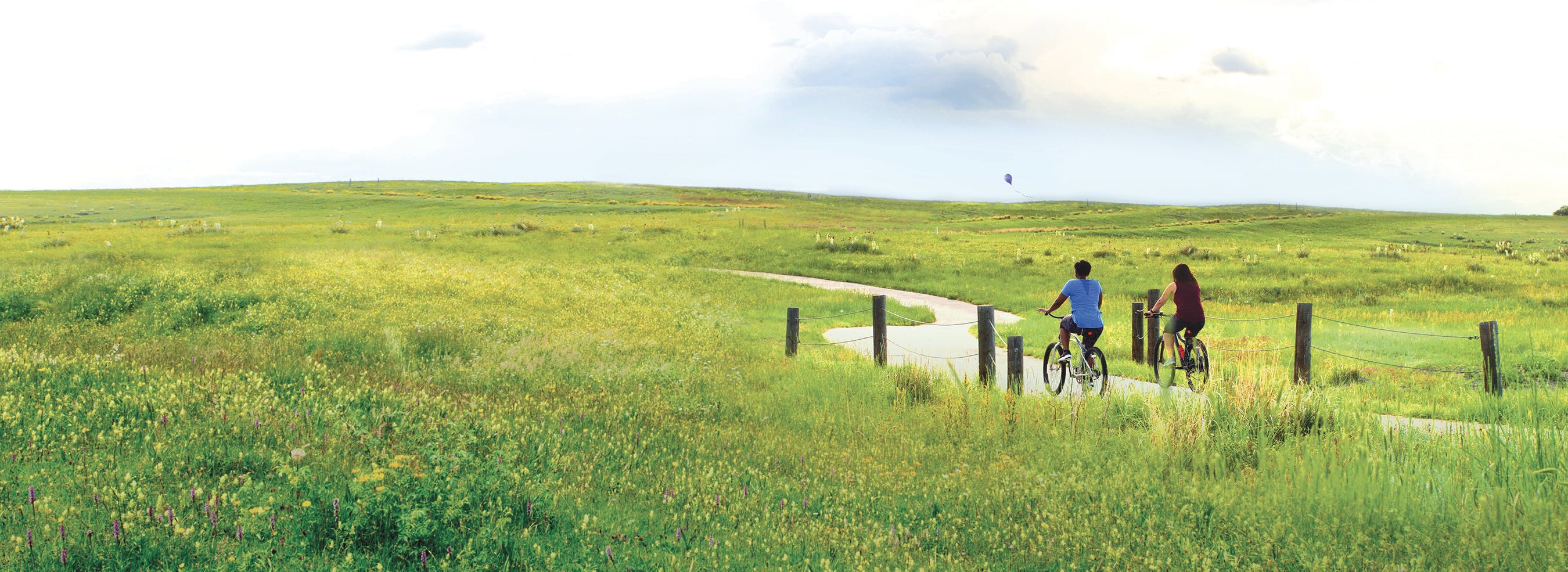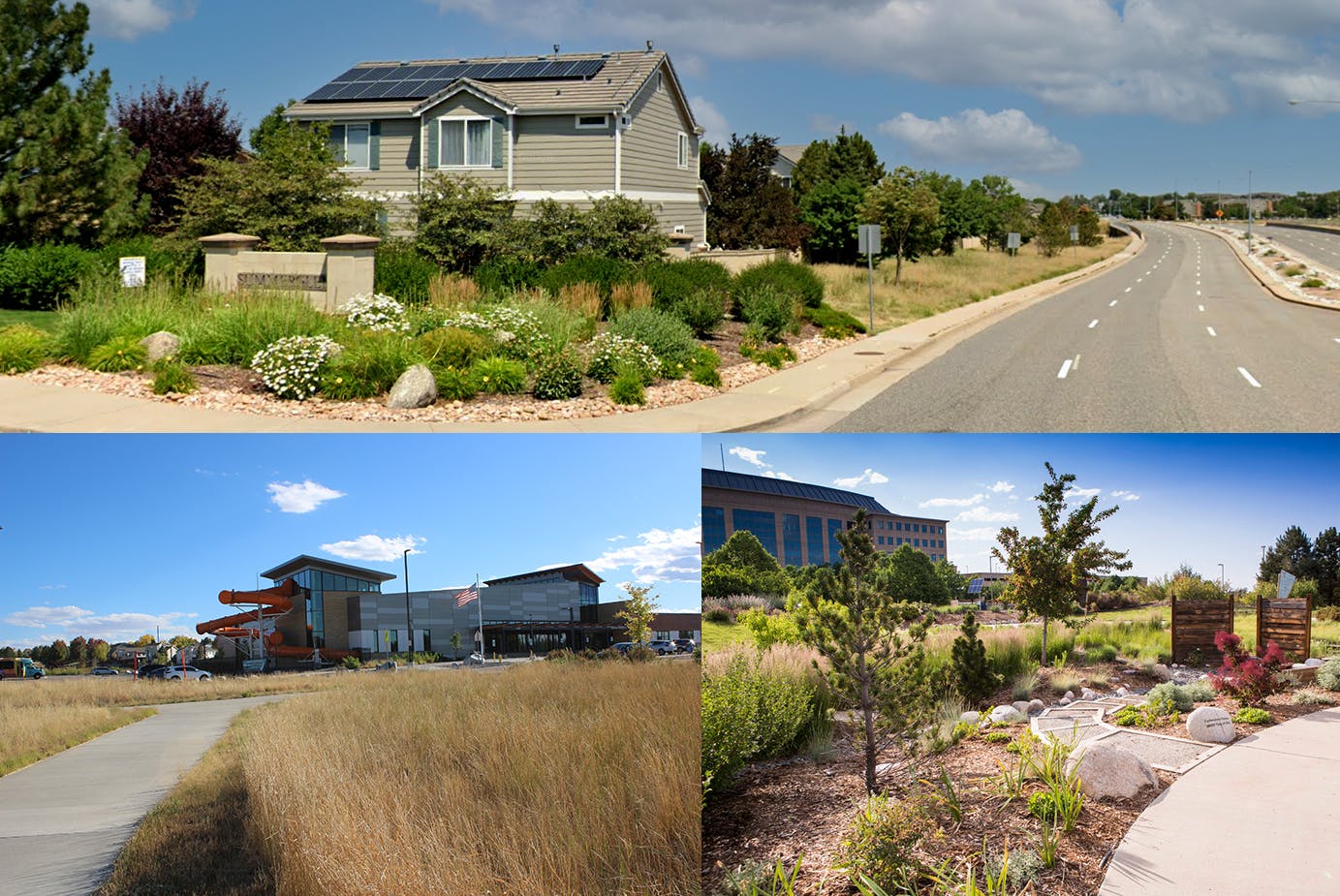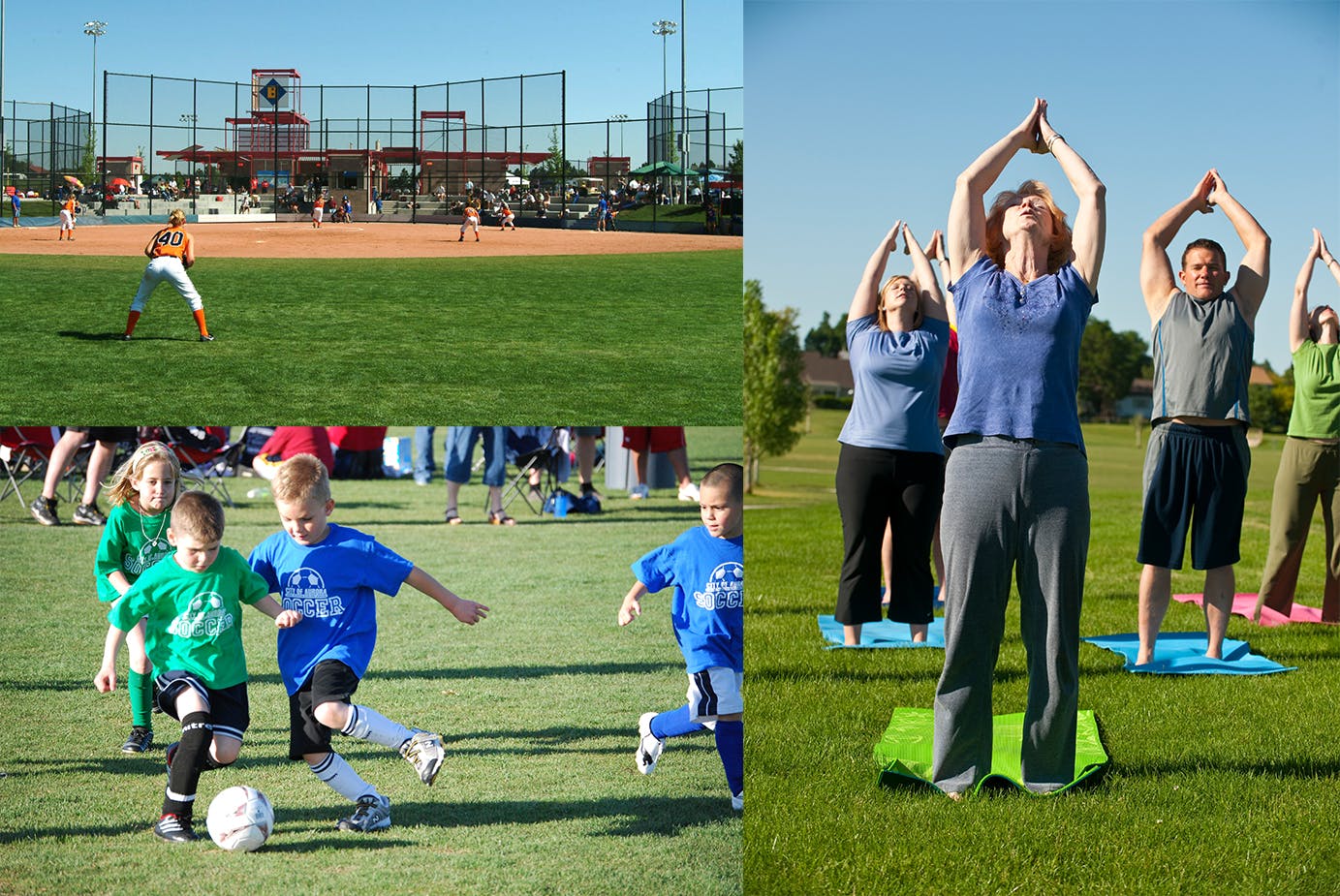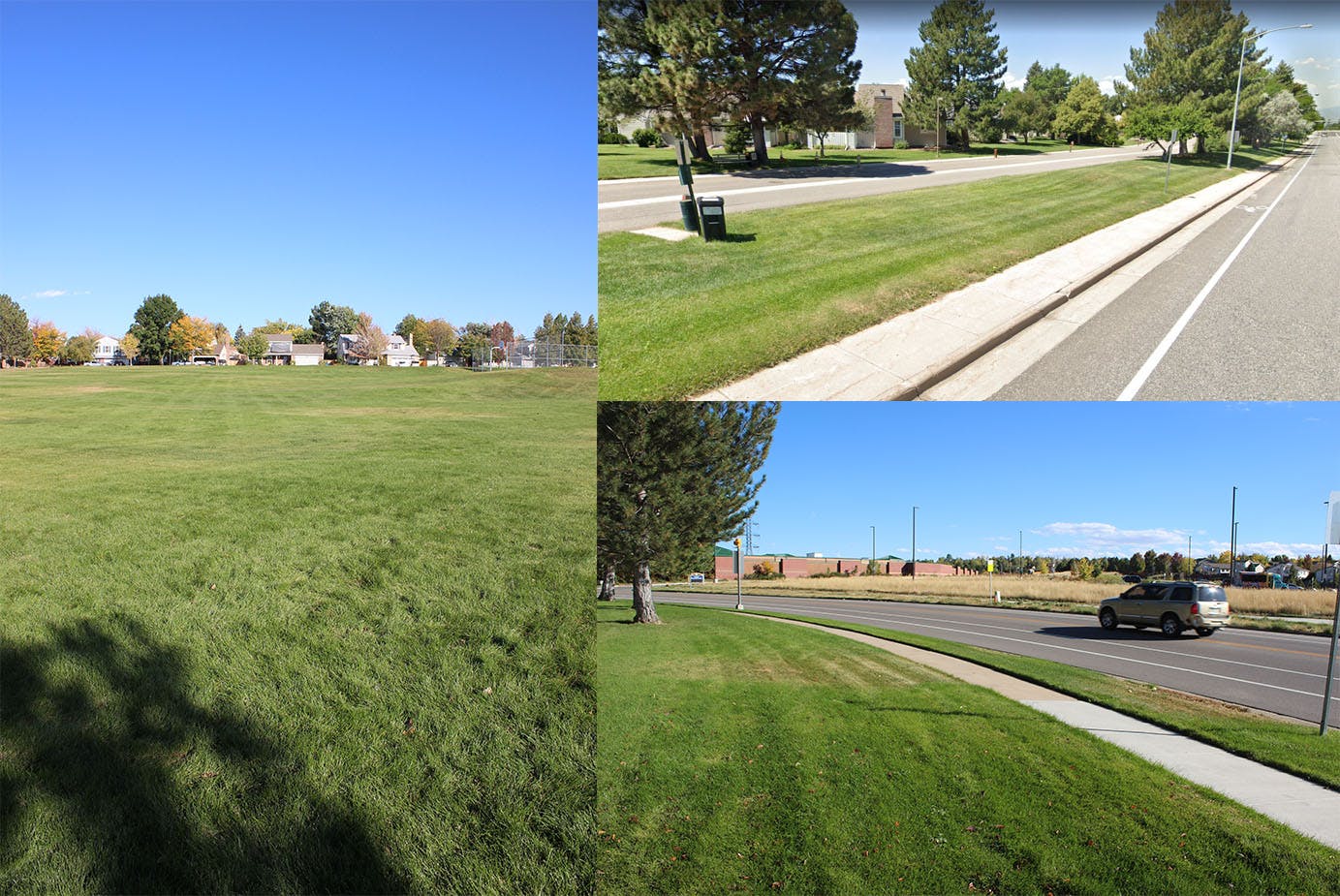Aurora is a fast-growing community in an arid environment, with water being a limited resource. Aurora Water is looking to meet future water needs and we want your help in determining how we can meet these needs. Our efforts in water conservation have resulted in large water savings over the years, but now we're looking for the next direction the community should take that will result in substantial and permanent water savings. Engage with us to make a difference.
Over the next year, we will discuss innovative water conservation efforts being pursued throughout the western U.S. to see if these can provide a model for Aurora to emulate. From Oct. 15, 2021 to Jan. 3, 2022, we want to talk about our system and what Aurora Water has accomplished. We'll share what other city's have done and exchange ideas on what the next big step is to achieve big savings. We're talking about substantial water savings - not hundreds or even thousands of gallons per year; rather, we want to find millions of gallons we can save. Big ideas for big savings. Read more on this topic below and join in the discussion at the bottom of the page!
Nonfunctional turf - should we limit this in Aurora?
This first discussion will be focused on whether Aurora should look at Southern Nevada Water Authority's (SNWA) mandate from the Nevada State Legislature to ban what's being referred to as nonfunctional turf. Nonfunctional turf is aesthetic only and has no recreational value. SNWA is developing a definition for nonfunctional turf, but is currently targeting these areas: - Medians
- Roundabouts
- Streetscapes
- Neighborhood entries
Why so much focus on turf? Turf uses a lot of water. Aurora averages about 15 inches of precipitation a year. According to the Colorado State University Extension, Kentucky bluegrass lawns may require 2.5 inches of water or more per week during the heat of summer. |  Meeting the needs of a growing community is one of Aurora Water's challenges Meeting the needs of a growing community is one of Aurora Water's challenges |
Lawn irrigation can account for half of all water distributed in Aurora. It takes a lot to bring water into the city, with some of our water traveling up to 180 miles through a series of reservoirs, pipes, tunnels and streams to get here. Water in Colorado is a very limited resource and with the climate getting hotter and dryer, Aurora Water wants to be very protective of this precious commodity. Aurora Water has also embraced the full use of our water through reuse. We've reclaimed water for use on our parks and municipal lands since the 1960s. Since 2010, Aurora has embraced the next step in water efficiency with Prairie Waters. This state of the art system recaptures our water and purifies it using a multibarrier process so it's indistinguishable from our mountain supplies. Now the water is clean, safe and great tasting as it come out of your tap. With Prairie Waters, we can fully utilize most of our water, and the best part, it's expandable. As we grow as a city, so does our ability to reuse even more water. Water used for irrigation, however, is lost to us through evaporation, reducing the amount we can reuse.
We're loo SummerGlen HOA entry - natives grass along the street and water-wise landscape at the cornerking to help reduce the amount of irrigated turf that may not be used regularly so we can save that water and bring it back into our system. There are many beautiful examples of landscapes that don't utilize turf. Aurora Water provides many services and incentives to encourage our customers to use water-wise landscape, which can remain healthy with half the water that turf needs and weathers longer periods without water. In addition to decreased water consumption and resilience, these landscapes often require less maintenance. We also have programs of plants that require no additional water, such as natives grasses.
SummerGlen HOA entry - natives grass along the street and water-wise landscape at the cornerking to help reduce the amount of irrigated turf that may not be used regularly so we can save that water and bring it back into our system. There are many beautiful examples of landscapes that don't utilize turf. Aurora Water provides many services and incentives to encourage our customers to use water-wise landscape, which can remain healthy with half the water that turf needs and weathers longer periods without water. In addition to decreased water consumption and resilience, these landscapes often require less maintenance. We also have programs of plants that require no additional water, such as natives grasses.
What can we learn from SNWA's effort to remove nonfunctional turf? Their charge is to be inclusive in their discussion and find accommodation for the whole community. We can learn from that effort. Where can it make sense to limit the use of nonfunctional turf and can we accomplish that while being fair and equitable. There's currently no proposal on the table for Aurora to pursue this. We want to understand how the community, including property owners, residents, business and the folks that work here, feel about this next step in saving water.
What does nonfunctional turf mean?
 Large areas of turf use a lot of water, yet they can be highly underutilized Large areas of turf use a lot of water, yet they can be highly underutilized
| What is the SNWA Nonfunctional Turf Removal Advisory Committee using as a definition for it's discussions? Check the meeting materials in the folder in the upper right portion of this page to watch that definition evolve, but here's the baseline definition that SNWA provided to help stimulate the discussion: - The installation of turf on public and private parks and schools is limited to active or programmed recreation areas such as sport fields
- Turf should not be installed in areas less than 1,500 contiguous square feet
- Turf cannot be less than 30 feet in any dimension
- Turf cannot be installed closer than 10 feet to a street
- Turf cannot be installed in front of entryways to residential neighborhoods or subdivisions where other recreational amenities do not exist
- The maximum slope of a turf area will not exceed 25 percent and turf areas should be graded to prevent runoff, except in designated drainage areas
See some examples in the photos on the right. |
Aurora is a fast-growing community in an arid environment, with water being a limited resource. Aurora Water is looking to meet future water needs and we want your help in determining how we can meet these needs. Our efforts in water conservation have resulted in large water savings over the years, but now we're looking for the next direction the community should take that will result in substantial and permanent water savings. Engage with us to make a difference.
Over the next year, we will discuss innovative water conservation efforts being pursued throughout the western U.S. to see if these can provide a model for Aurora to emulate. From Oct. 15, 2021 to Jan. 3, 2022, we want to talk about our system and what Aurora Water has accomplished. We'll share what other city's have done and exchange ideas on what the next big step is to achieve big savings. We're talking about substantial water savings - not hundreds or even thousands of gallons per year; rather, we want to find millions of gallons we can save. Big ideas for big savings. Read more on this topic below and join in the discussion at the bottom of the page!
Nonfunctional turf - should we limit this in Aurora?
This first discussion will be focused on whether Aurora should look at Southern Nevada Water Authority's (SNWA) mandate from the Nevada State Legislature to ban what's being referred to as nonfunctional turf. Nonfunctional turf is aesthetic only and has no recreational value. SNWA is developing a definition for nonfunctional turf, but is currently targeting these areas: - Medians
- Roundabouts
- Streetscapes
- Neighborhood entries
Why so much focus on turf? Turf uses a lot of water. Aurora averages about 15 inches of precipitation a year. According to the Colorado State University Extension, Kentucky bluegrass lawns may require 2.5 inches of water or more per week during the heat of summer. |  Meeting the needs of a growing community is one of Aurora Water's challenges Meeting the needs of a growing community is one of Aurora Water's challenges |
Lawn irrigation can account for half of all water distributed in Aurora. It takes a lot to bring water into the city, with some of our water traveling up to 180 miles through a series of reservoirs, pipes, tunnels and streams to get here. Water in Colorado is a very limited resource and with the climate getting hotter and dryer, Aurora Water wants to be very protective of this precious commodity. Aurora Water has also embraced the full use of our water through reuse. We've reclaimed water for use on our parks and municipal lands since the 1960s. Since 2010, Aurora has embraced the next step in water efficiency with Prairie Waters. This state of the art system recaptures our water and purifies it using a multibarrier process so it's indistinguishable from our mountain supplies. Now the water is clean, safe and great tasting as it come out of your tap. With Prairie Waters, we can fully utilize most of our water, and the best part, it's expandable. As we grow as a city, so does our ability to reuse even more water. Water used for irrigation, however, is lost to us through evaporation, reducing the amount we can reuse.
We're loo SummerGlen HOA entry - natives grass along the street and water-wise landscape at the cornerking to help reduce the amount of irrigated turf that may not be used regularly so we can save that water and bring it back into our system. There are many beautiful examples of landscapes that don't utilize turf. Aurora Water provides many services and incentives to encourage our customers to use water-wise landscape, which can remain healthy with half the water that turf needs and weathers longer periods without water. In addition to decreased water consumption and resilience, these landscapes often require less maintenance. We also have programs of plants that require no additional water, such as natives grasses.
SummerGlen HOA entry - natives grass along the street and water-wise landscape at the cornerking to help reduce the amount of irrigated turf that may not be used regularly so we can save that water and bring it back into our system. There are many beautiful examples of landscapes that don't utilize turf. Aurora Water provides many services and incentives to encourage our customers to use water-wise landscape, which can remain healthy with half the water that turf needs and weathers longer periods without water. In addition to decreased water consumption and resilience, these landscapes often require less maintenance. We also have programs of plants that require no additional water, such as natives grasses.
What can we learn from SNWA's effort to remove nonfunctional turf? Their charge is to be inclusive in their discussion and find accommodation for the whole community. We can learn from that effort. Where can it make sense to limit the use of nonfunctional turf and can we accomplish that while being fair and equitable. There's currently no proposal on the table for Aurora to pursue this. We want to understand how the community, including property owners, residents, business and the folks that work here, feel about this next step in saving water.
What does nonfunctional turf mean?
 Large areas of turf use a lot of water, yet they can be highly underutilized Large areas of turf use a lot of water, yet they can be highly underutilized
| What is the SNWA Nonfunctional Turf Removal Advisory Committee using as a definition for it's discussions? Check the meeting materials in the folder in the upper right portion of this page to watch that definition evolve, but here's the baseline definition that SNWA provided to help stimulate the discussion: - The installation of turf on public and private parks and schools is limited to active or programmed recreation areas such as sport fields
- Turf should not be installed in areas less than 1,500 contiguous square feet
- Turf cannot be less than 30 feet in any dimension
- Turf cannot be installed closer than 10 feet to a street
- Turf cannot be installed in front of entryways to residential neighborhoods or subdivisions where other recreational amenities do not exist
- The maximum slope of a turf area will not exceed 25 percent and turf areas should be graded to prevent runoff, except in designated drainage areas
See some examples in the photos on the right. |
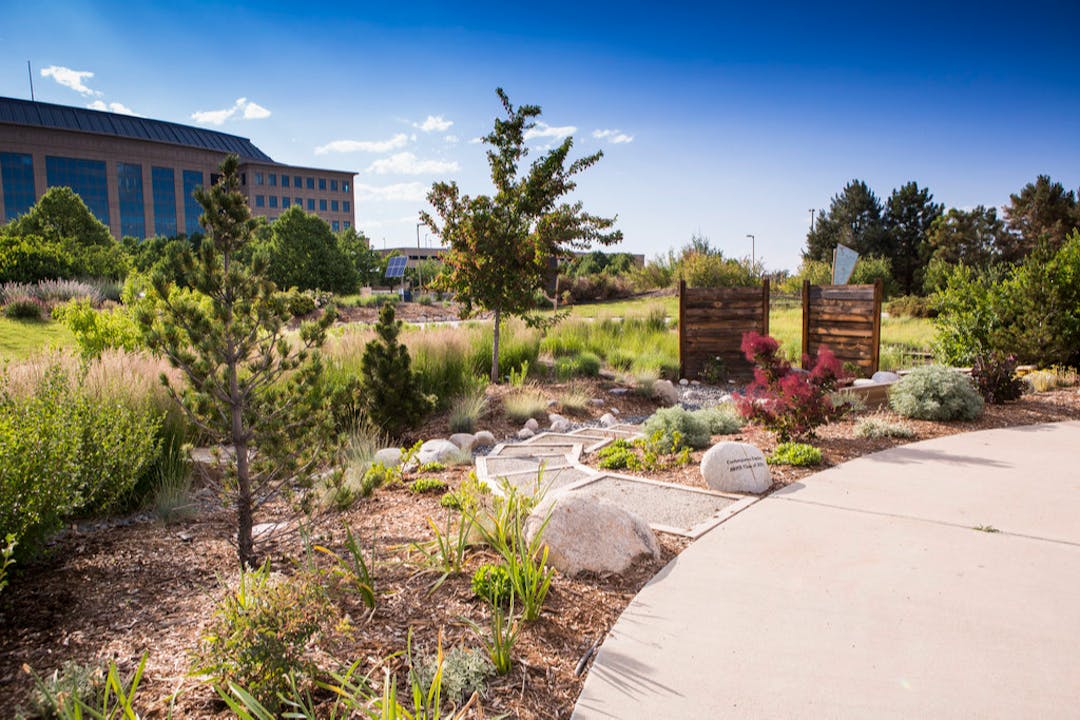
 Meeting the needs of a growing community is one of Aurora Water's challenges
Meeting the needs of a growing community is one of Aurora Water's challenges SummerGlen HOA entry - natives grass along the street and water-wise landscape at the cornerking to help reduce the amount of irrigated turf that may not be used regularly so we can save that water and bring it back into our system. There are many beautiful examples of landscapes that don't utilize turf. Aurora Water provides many services and incentives to encourage our customers to use water-wise landscape, which can remain healthy with half the water that turf needs and weathers longer periods without water. In addition to decreased water consumption and resilience, these landscapes often require less maintenance. We also have programs of plants that require no additional water, such as natives grasses.
SummerGlen HOA entry - natives grass along the street and water-wise landscape at the cornerking to help reduce the amount of irrigated turf that may not be used regularly so we can save that water and bring it back into our system. There are many beautiful examples of landscapes that don't utilize turf. Aurora Water provides many services and incentives to encourage our customers to use water-wise landscape, which can remain healthy with half the water that turf needs and weathers longer periods without water. In addition to decreased water consumption and resilience, these landscapes often require less maintenance. We also have programs of plants that require no additional water, such as natives grasses. Large areas of turf use a lot of water, yet they can be highly underutilized
Large areas of turf use a lot of water, yet they can be highly underutilized 



